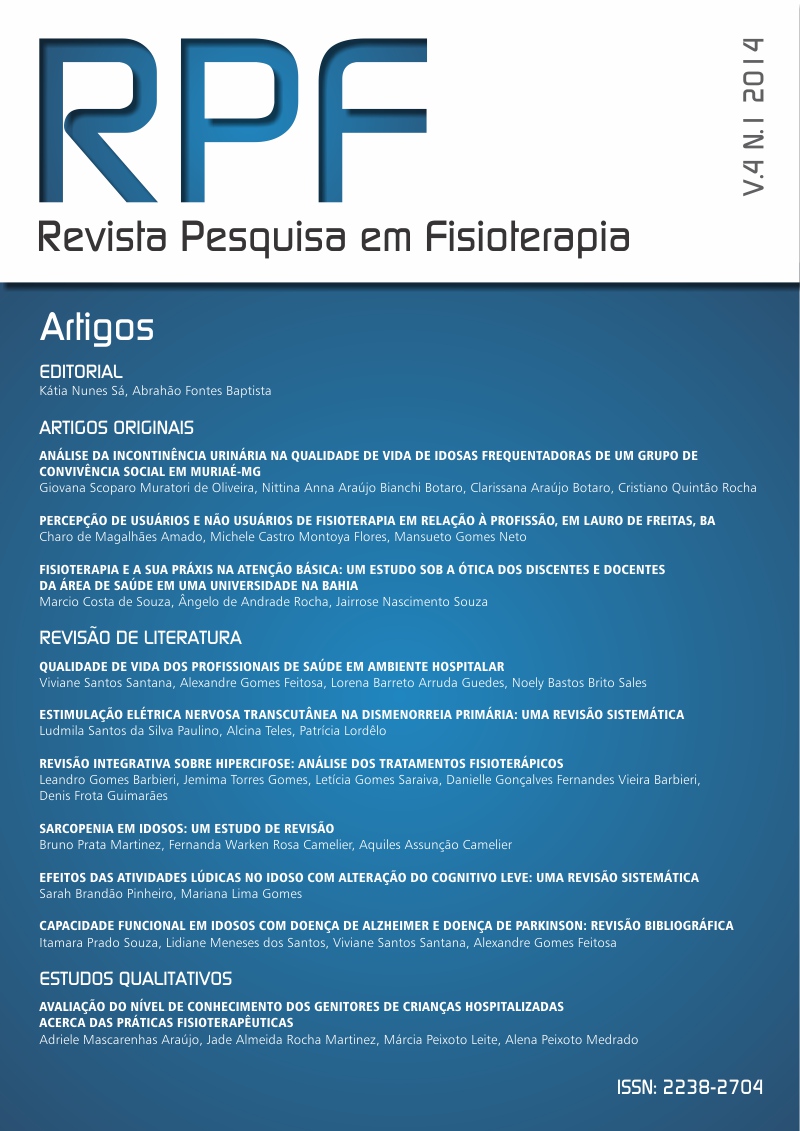INTEGRATIVE REVIEW ON HYPERKYPHOSIS: ANALYSIS OF TREATMENTS PHYSIOTHERAPY
DOI:
https://doi.org/10.17267/2238-2704rpf.v4i1.330Keywords:
Thoracic Hyperkyphosis, Treatment, PhysiotherapyAbstract
Introduction: The stance can be modified over time losing its original configuration and its structural capacity functional physiological. A change is quite common thoracic kyphosis. This anterior-posterior deformity of the spine is affected in individuals growing increasingly earlier due to various aspects such as: psychological, traumatic, congenital, technological and acquired habits. The Physical therapy can help reduce the damage caused by this deformity and improving the quality of life of the individual with this condition. Objective: To study integrative review aimed at proving the effectiveness of physiotherapy treatments for thoracic kyphosis. Methodology: The study through a literature integrative review, in the period August September 2012 in which they analyzed the journals in the library of colleges INTA. We selected articles that addressed the physiotherapy treatment for thoracic kyphosis. Results: Of the 20 articles found on physiotherapy treatment of kyphosis, only 7 articles met the inclusion criteria previously established. Of the articles analyzed the most common treatment was Isostretching technique, being able to improve functional capacity, improves the alignment of the thoracic spine regardless of the number of sessions, allowing it a reduction of kyphosis angle and improves the retraction of the muscle. Conclusion: Thus it is concluded that among the treatments used technique Isostretching, showed the best results and was the most used. However it is noteworthy that all treatments found had good results.Downloads
Download data is not yet available.
Downloads
Published
06/06/2014
Issue
Section
Literature Reviews
How to Cite
1.
Barbieri LG, Gomes JT, Saraiva LG, Vieira Barbieri DGF, Guimarães DF. INTEGRATIVE REVIEW ON HYPERKYPHOSIS: ANALYSIS OF TREATMENTS PHYSIOTHERAPY. Rev Pesq Fisio [Internet]. 2014 Jun. 6 [cited 2024 Nov. 20];4(1):55-61. Available from: https://www5.bahiana.edu.br/index.php/fisioterapia/article/view/330



